
Roots
To truly comprehend the intricate dance between the biology of textured hair and the ancestral care rituals developed over millennia, one must journey beyond superficial beauty standards and into the very essence of cultural memory. This exploration delves into the deep heritage woven into every strand, recognizing hair not merely as an adornment, but as a living archive of collective wisdom, resilience, and identity. Our journey begins at the microscopic level, where the unique structure of textured hair speaks volumes about the ingenuity of those who first learned to nourish and protect it, passing down practices that transcend time.

The Architecture of the Strand
The inherent biological characteristics of textured hair have always shaped its care. Unlike straight hair, which typically emerges from a round follicle, textured hair springs from an elliptical or oval-shaped follicle . This distinct follicular architecture dictates the curvilinear path of the hair shaft as it grows, resulting in its characteristic coils, curls, and kinks.
As the hair twists, its cuticle layers, which are the protective outer scales, do not lie as flat as those on straight hair. This open cuticle structure, while allowing for magnificent volume and unique light reflection, also means textured hair can lose moisture more readily and is more susceptible to environmental factors.
The elliptical shape of the textured hair follicle is a fundamental biological trait that profoundly influenced ancestral care practices, guiding the development of moisture-retentive rituals.
This biological reality meant ancestral communities intuitively understood the need for practices that would minimize moisture loss and enhance elasticity. Consider the desert climates of many African regions, where intense sun and dry air could quickly dehydrate hair. The tight coiling of textured hair, a likely evolutionary adaptation to protect the scalp from direct solar radiation, also posed a challenge for moisture retention. Ancestral care, therefore, revolved around sealing the cuticle and lubricating the strand.
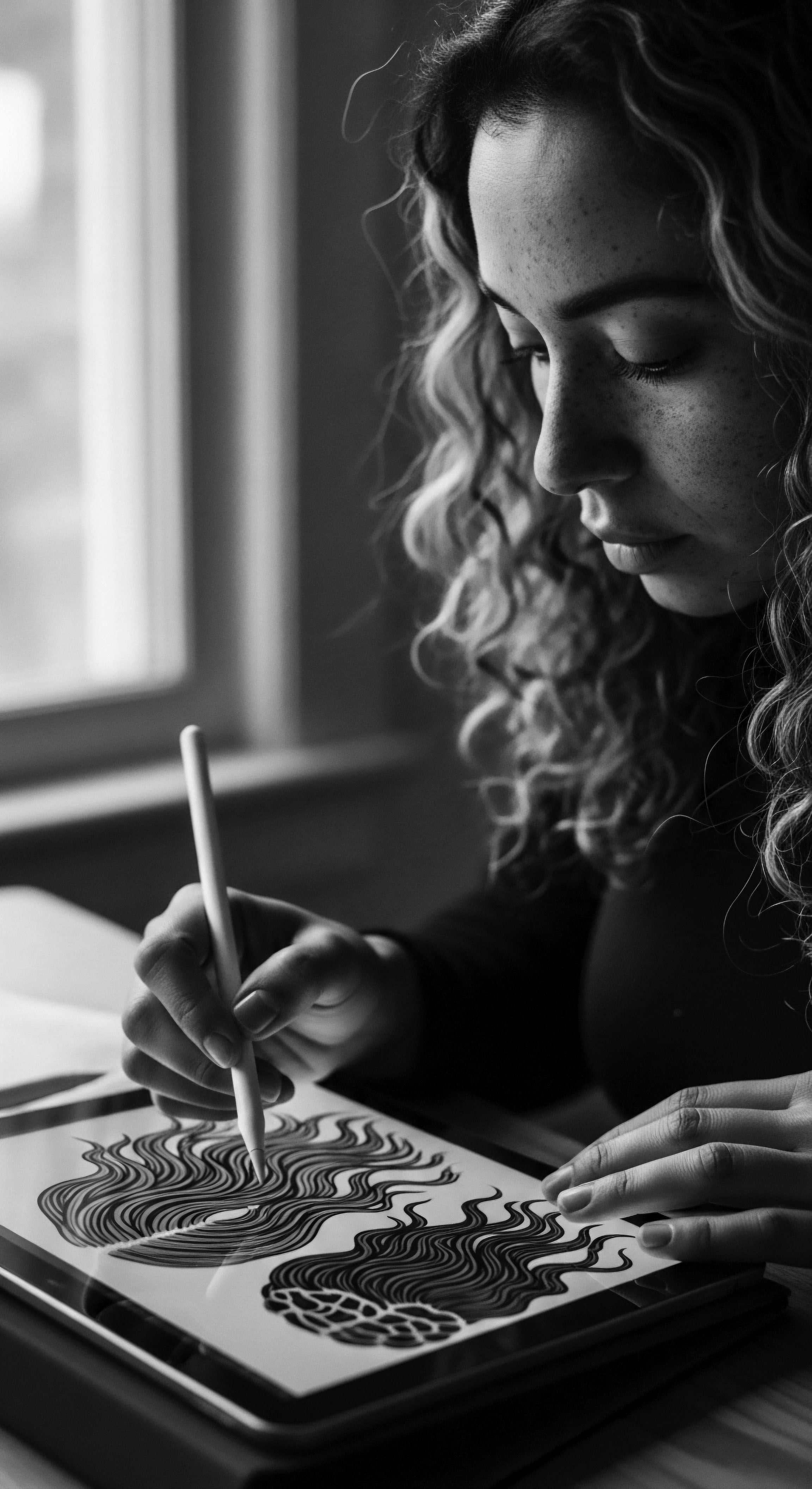
Early Classification and Cultural Observation
While modern science employs numerical and alphabetical systems for hair classification, ancestral societies possessed their own intricate ways of understanding hair. Their systems were not based on microscopic analysis but on lived experience and keen observation of how hair behaved, its response to moisture, and its general health. These observations informed the very first ‘classifications’ of textured hair within specific communities, guiding care.
Hair that was particularly dry, prone to breakage, or especially tightly coiled would receive different applications and techniques than hair that might be naturally softer or looser. This understanding was rooted in practical application and communal knowledge.
- Kush and Kemet ❉ Archaeological findings, dating back over 5,500 years in ancient Kush and Kemet (present-day Sudan and Egypt), reveal wooden, bone, and ivory combs buried with individuals, underscoring the sacred nature of hair and its care tools.
- Yoruba Traditions ❉ Among the Yoruba people of Nigeria, hair was regarded as vital, akin to the head itself, with care for both believed to invite positive fortune.
- Himba Practices ❉ The Himba tribe in Namibia historically relied on a distinctive mixture of clay and cow fat, known as ‘otjize,’ which served as a moisturizer for both skin and hair, providing sun protection and aiding detangling.
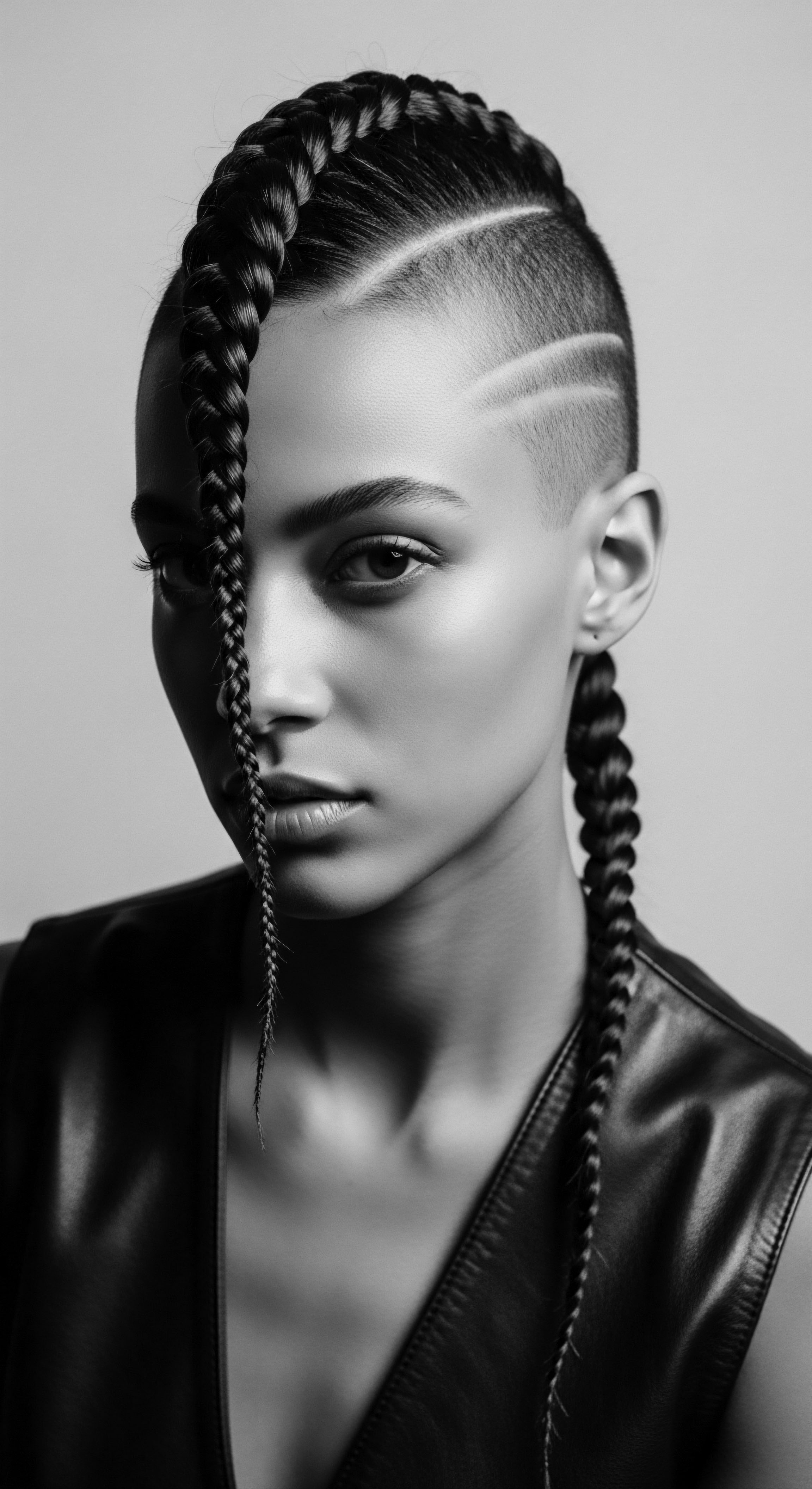
Seasonal Rhythms and Hair’s Life
Ancestral practices often aligned with the rhythms of nature and the human body’s life cycles. They recognized that hair, like all living things, experiences periods of growth and rest. The anagen phase , the active growth stage, was likely supported by nourishing treatments, perhaps through the application of plant-based oils and butters rich in vitamins and minerals. The shedding during the telogen phase would have been understood as a natural occurrence, prompting practices that minimized stress on new growth and respected the hair’s inherent cycle.
Communities observed how diet, environmental shifts, and even seasonal changes impacted hair’s vitality. For instance, increased moisture during rainy seasons or drier conditions in hot months would have influenced ingredient choices and the frequency of care rituals. This holistic approach, deeply interconnected with their surroundings, was a direct response to textured hair’s biological needs for consistent moisture and gentle handling.

Ritual
The biology of textured hair, with its coils and inherent dryness, did not present a barrier to beauty; rather, it inspired a wealth of sophisticated practices that transformed daily care into meaningful ritual. These were not simply acts of grooming, but extensions of cultural expression, community bonding, and spiritual connection. The development of traditional tools and protective styles speaks directly to an ancestral wisdom that instinctively understood how to work with, rather than against, the hair’s natural inclinations.
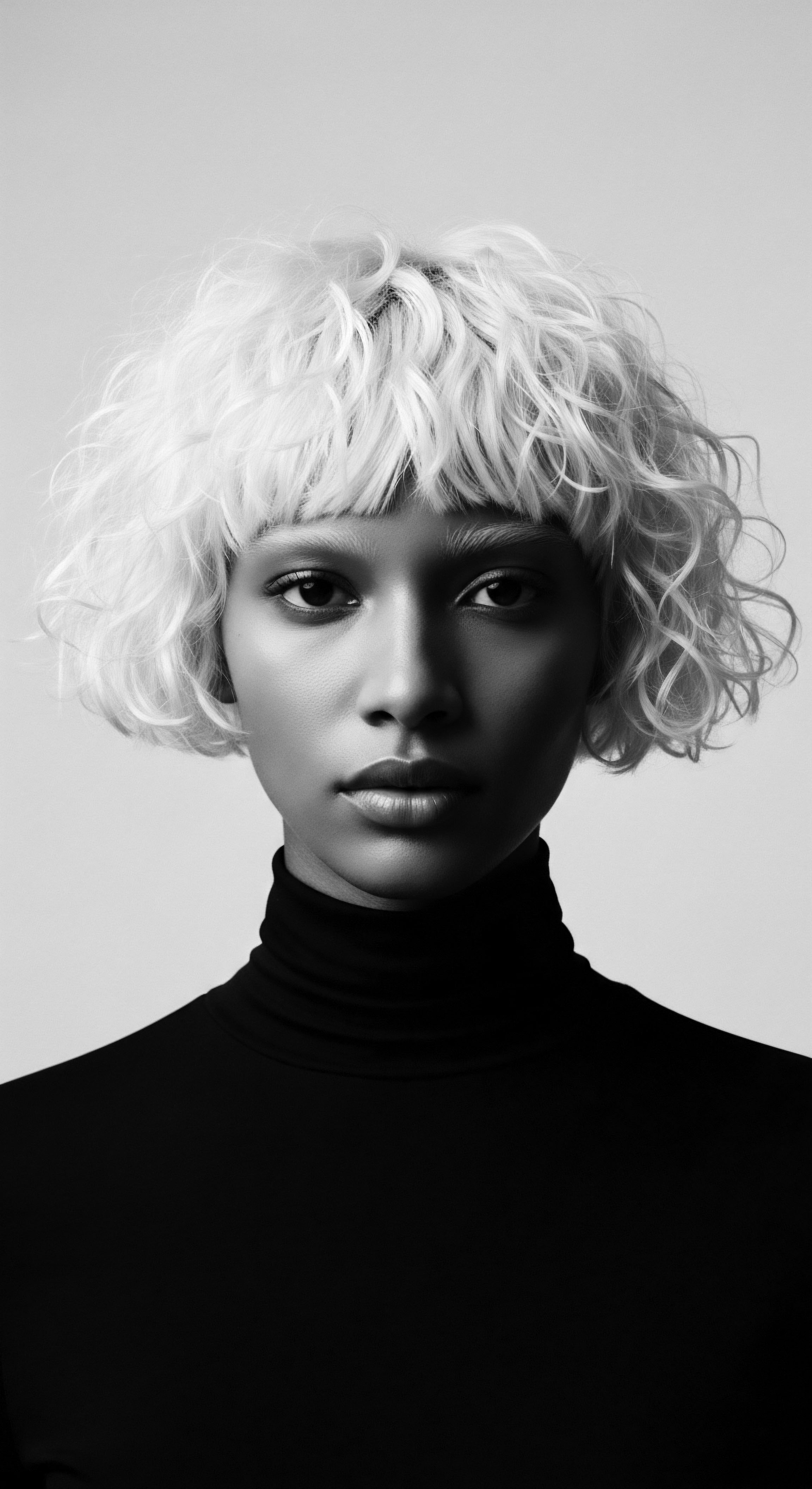
How Did Hair’s Unique Structure Influence Protective Styling?
The biological reality of textured hair – its predisposition to dryness and mechanical stress due to its helical structure and more exposed cuticle – directly influenced the widespread practice of protective styling across African civilizations. Styles such as braids, twists, and locs, far from being mere decorative choices, were practical innovations. They shielded delicate strands from environmental damage, minimized manipulation, and helped to retain precious moisture.
This reduced breakage, allowing for length retention and promoting overall hair health. For centuries, across diverse communities, these styles served as a living testament to an intimate understanding of hair biology.
Consider the cornrows (also known as ‘canerows’ in some areas) that spread across West Africa. Beyond their aesthetic appeal, these styles kept hair neatly contained and protected. During the transatlantic slave trade, their ingenuity reached a somber, yet powerful, peak. Enslaved Africans, particularly rice farmers, braided rice seeds into their cornrows as a means of survival, carrying their sustenance and heritage across the ocean.
In other instances, cornrows were used to create maps to guide escapes from plantations, a silent yet profound act of resistance. (BLAM UK CIC, 2022) This example powerfully illuminates how the biological nature of textured hair, capable of holding complex braided patterns, became intertwined with survival and cultural preservation.

Ancestral Tools and Their Purpose
The tools employed in ancestral hair care were precisely designed to accommodate the unique characteristics of textured hair. Unlike fine, straight hair that might tolerate a close-toothed comb, textured hair demands gentle detangling. This necessity led to the creation of wide-toothed combs , often carved from wood, bone, or ivory.
Archaeological discoveries in ancient Kush and Kemet show these combs were not just utilitarian items; they were adorned with symbols, reflecting tribal identity, social standing, and even spiritual beliefs. The robust construction and spacing of the teeth in these ancient combs demonstrate an empirical understanding of preventing breakage and preserving the integrity of coiled strands.
| Tool Combs |
| Ancestral Material Wood, Bone, Ivory |
| Biological Adaptation for Textured Hair Wide-set teeth to detangle coils gently, reducing breakage. |
| Tool Hair Picks |
| Ancestral Material Bone, Wood |
| Biological Adaptation for Textured Hair Designed to lift and add volume without disrupting curl patterns or causing friction. |
| Tool Hair Pins/Adornments |
| Ancestral Material Metal, Beads, Shells |
| Biological Adaptation for Textured Hair Secured styles, held sections, and distributed weight to minimize tension on individual strands. |
| Tool Gourds/Clay Bowls |
| Ancestral Material Dried Gourd, Clay |
| Biological Adaptation for Textured Hair Used for mixing and applying thick, nourishing masks and cleansers. |
| Tool These tools reflect a deep, intuitive grasp of textured hair's needs, passed down through generations. |
Furthermore, hair threading, known as ‘Irun Kiko’ among the Yoruba of Nigeria, involved using flexible wool or cotton threads to wrap sections of hair into three-dimensional patterns. This technique not only created elaborate styles but also stretched the hair, making it less prone to tangling and minimizing breakage. Such methods were direct responses to the biological tendencies of textured hair, reducing knotting and retaining length.
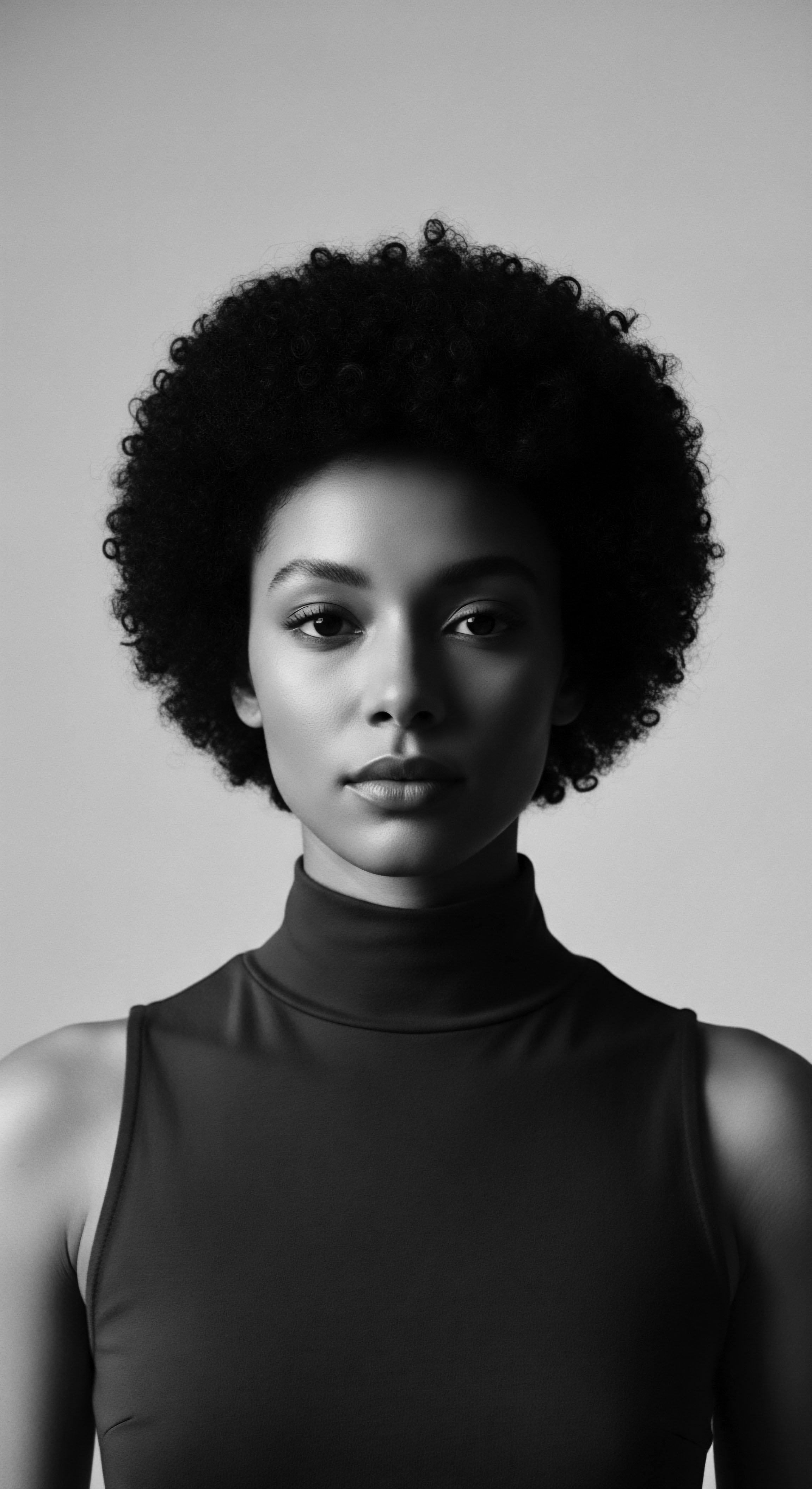
Relay
The wisdom gleaned from understanding textured hair’s biology cascaded through generations, forming the bedrock of holistic care regimens that spanned daily rituals and targeted problem-solving. This deep knowledge, passed down through oral traditions and communal practice, represents a living library of heritage, a testament to ingenious adaptation. These regimens were more than a list of steps; they were a dialogue with the hair itself, shaped by the environment, available resources, and the collective understanding of well-being.

How Did Ancestral Wisdom Create Personalized Care?
Ancestral communities developed highly personalized hair care by observing individual hair behavior within a family or community, rather than relying on universal prescriptions. They understood that even within textured hair, variations existed – some hair might be finer, some coarser, some more prone to shrinkage, others to dryness. This nuanced observation allowed for a tailored approach to selecting ingredients and techniques. The availability of local flora, often rich in emollients, humectants, and anti-inflammatory properties, dictated which plant-based ingredients would become staples.
For instance, shea butter , sourced from the Karite tree, was a central ingredient in regions across the Sahel. Its fatty acid profile was perfectly suited to coat and protect textured strands, providing deep moisture and acting as a sealant against harsh environmental conditions. The understanding of its properties was an empirical science, refined over centuries of use.
In a 2024 review, researchers identified 68 plant species used in African hair treatment, with many also possessing antidiabetic properties, suggesting a holistic connection between internal health and hair vitality in traditional understanding (Modi et al. 2024). This study underscores the intricate link ancestral communities perceived between overall wellness and hair health, where topical applications of plant remedies often paralleled their internal medicinal uses. It points to a deep, integrated approach to care that transcends mere cosmetic application.
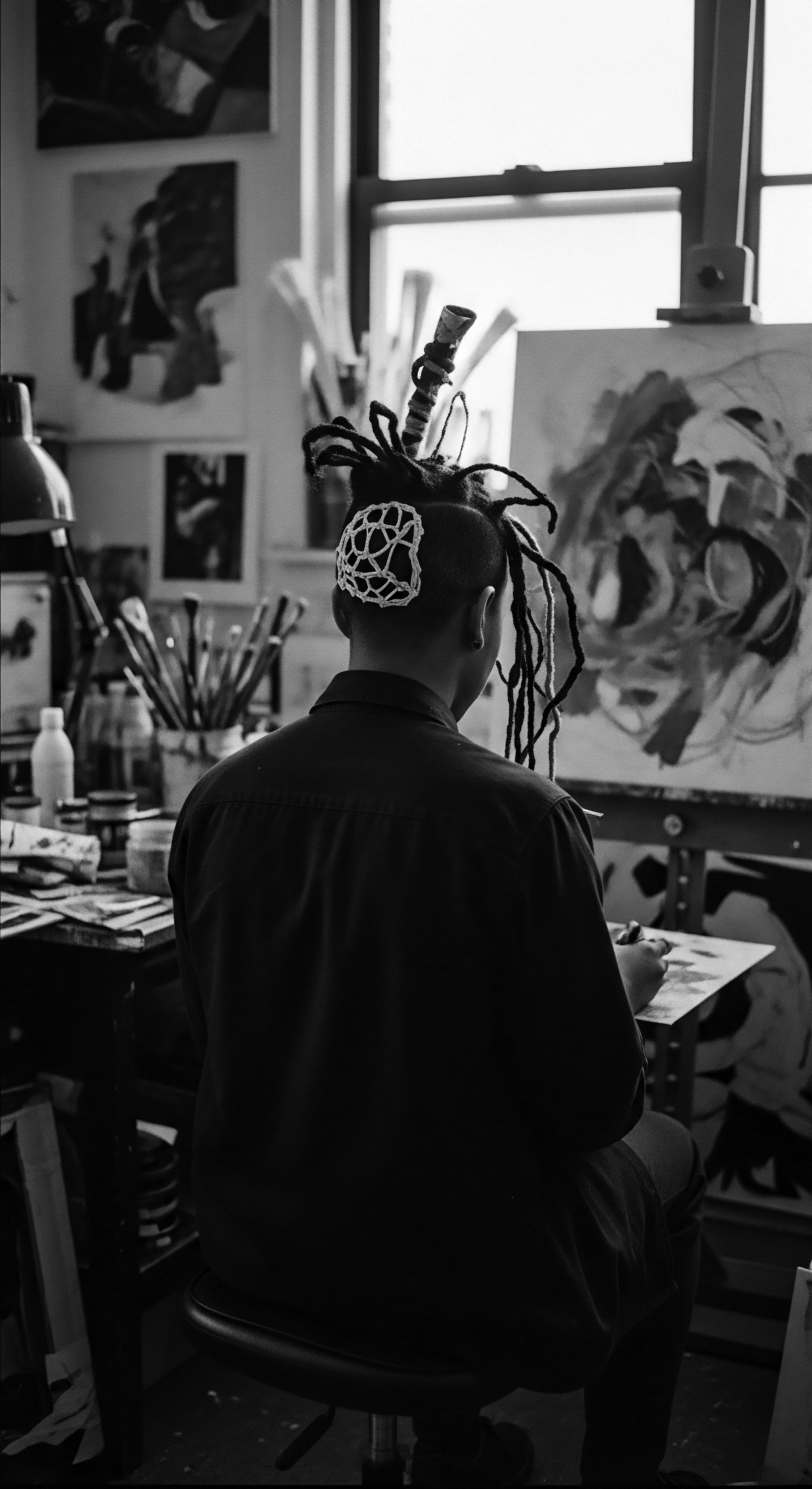
The Nighttime Sanctuary of the Crown
The vulnerability of textured hair to friction and moisture loss during sleep gave rise to the practice of nighttime protection, a ritual that holds profound cultural and biological significance. Head coverings, such as bonnets and wraps, known historically as ‘dukus’ and ‘doeks’ in various African countries, were not simply fashion statements. Their function was deeply practical ❉ to protect intricate styles, minimize tangling, and preserve precious moisture. The smooth surface of materials like satin and silk, favored in later historical periods, became preferred precisely because they reduced friction against the hair shaft, thus preventing breakage and frizz.
This foresight, to safeguard the hair during periods of rest, highlights an ancestral ingenuity directly responsive to textured hair’s biological needs for minimal disturbance and moisture preservation. It evolved from a necessity born of hair biology into a cherished act of self-care and cultural continuity, carrying forward practices that ensured the longevity and beauty of their crowns.

Ingredients of Heritage and Healing
The pharmacopeia of ancestral hair care was vast, drawn directly from the earth. Each ingredient was selected for specific properties that countered the inherent challenges of textured hair.
- Shea Butter ❉ From the nuts of the shea tree, its rich fatty acids provided deep conditioning and sealed moisture onto the hair shaft, compensating for the high porosity of many textured hair types.
- Rhassoul Clay ❉ Sourced from the Atlas Mountains of Morocco, this mineral-rich clay was used as a cleanser and hair mask, helping to detoxify the scalp and absorb excess oil while still providing minerals. Its fine particles could gently cleanse without stripping the natural oils critical for textured hair.
- Aloe Vera ❉ Widely used across various African and Latin American traditions, its gel provided hydration, soothed the scalp, and could promote hair health through its anti-inflammatory properties.
- Chebe Powder ❉ Hailing from Chad, this mixture of herbs, applied with oil to the hair strands, was renowned for its ability to strengthen hair and aid in length retention by reducing breakage.
These were not randomly chosen; their efficacy was observed, tested, and validated through generations of communal experience, a scientific process of sorts, long before modern laboratories existed. The application methods—often involving warm oils, scalp massages, and extended treatment times—were also designed to ensure maximum absorption and benefit, responding to the biological need for sustained nourishment for textured hair.

Reflection
The journey through textured hair’s biology and ancestral care leaves us with a profound understanding ❉ hair is a living legacy, a testament to continuity and creative adaptation. It echoes the wisdom of those who came before, shaping not only physical appearance but also spiritual and communal bonds. The very curls and coils, once pathologized by systems of oppression, stand as symbols of strength and resistance.
To care for textured hair, then, is to participate in an ancient dialogue, to honor a heritage of ingenuity that responded to inherent biological needs with a reverence for nature and a communal spirit. Each strand carries the story of survival, artistry, and an unbroken connection to the earth and one another.

References
- Adetutu Omotos. (2018). The History of African Hair. Journal of Pan African Studies .
- Byrd, A. D. & Tharps, L. L. (2014). Hair Story ❉ Untangling the Roots of Black Hair in America. St. Martin’s Publishing Group.
- Dabiri, E. (2020). Twisted ❉ The Tangled History of Black Hair Culture. HarperCollins.
- Modi, R. et al. (2024). Cosmetopoeia of African Plants in Hair Treatment and Care ❉ Topical Nutrition and the Antidiabetic Connection? Diversity, 16(2), 96.
- Davis-Sivasothy, A. (2011). The Science of Black Hair ❉ A Comprehensive Guide to Textured Hair Care. Sivasothy Hair.
